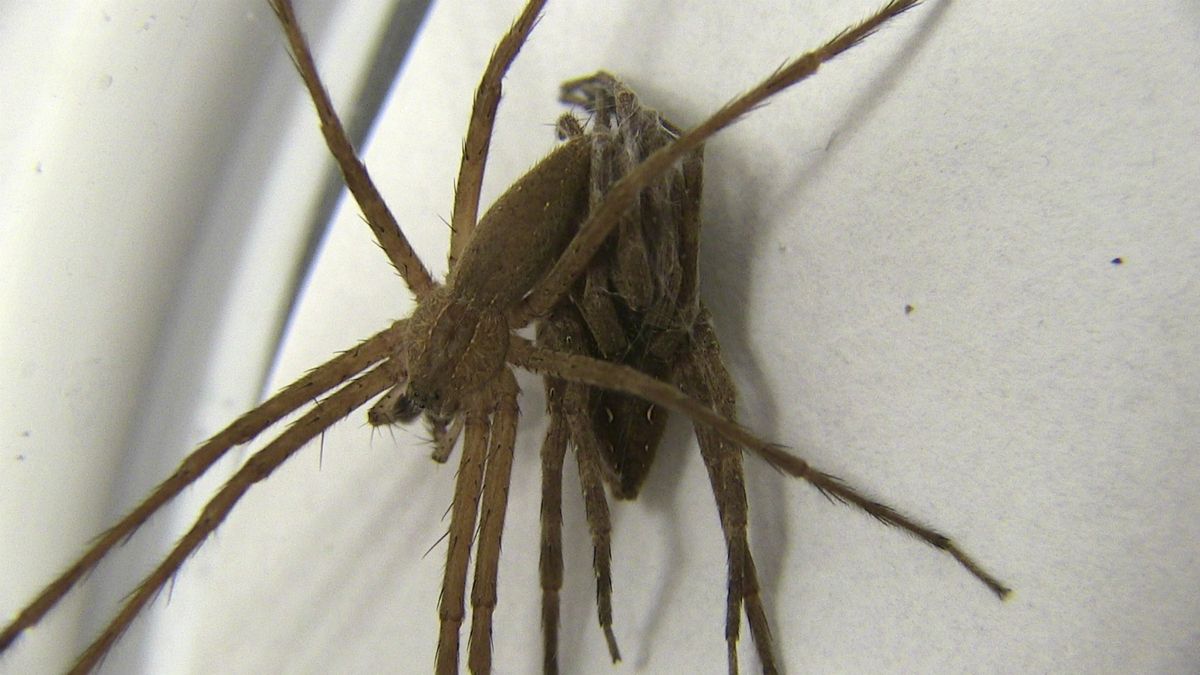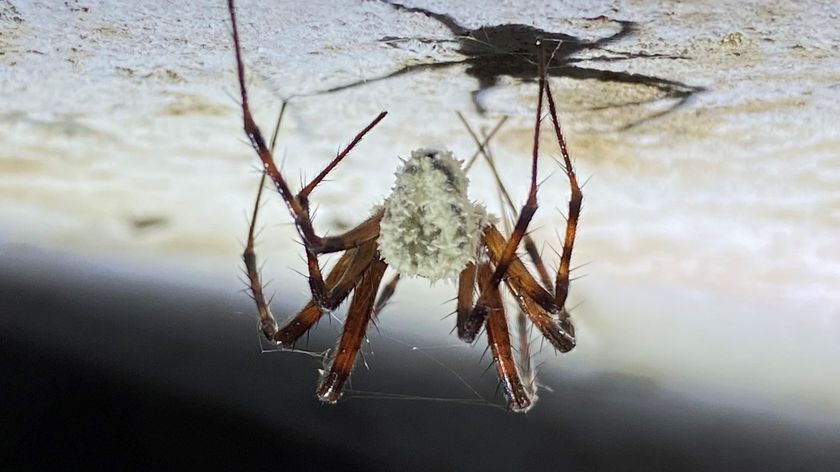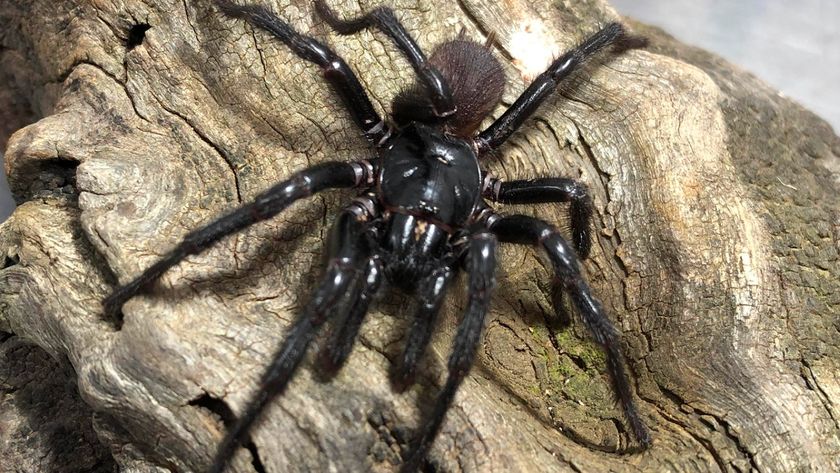Kinky Spiders: Males Tie Up Partners During Sex

Tying up your lover is one way to introduce a little excitement to the bedroom. But for male nursery-web spiders, bondage during mating can be a matter of life and death. By restraining their partners, male spiders reduce their chances of falling victim to sexual cannibalism, a new study finds.
Nursery-web spiders (Pisaurina mira) are long-limbed hunters that catch and overpower their prey. Though the females' bodies can be a bit larger than males', measuring about 0.5 to 0.7 inches (12 to 17 millimeters) in length, researchers noted that males' legs were longer than females', relative to their body size.
Prior studies described the male spider's unusual mating behavior — wrapping silk around the female's legs before and during copulation — and the scientists wondered if longer legs would help males restrain their hungry mates, leaving the guys more likely to survive cannibalism sparked during the throes of passion. [Animal Sex: 7 Tales of Naughty Acts in the Wild]
Safe sex
In some insect and spider species, sex can be a deadly roll of the dice for males, carrying the possibility that their female partners may suddenly identify them as a convenient postcoital snack. While this is understandably not an ideal outcome for males, cannibalizing is "quite beneficial for the female," said Alissa Anderson, who co-authored the study.
Anderson, a behavioral ecologist at the University of Nebraska-Lincoln, told Live Science in an email that to a just-fertilized female with eggs to nourish, her mate's immediate value transforms from sex partner into "resources for her developing offspring" — like a Happy Meal with legs. In another spider species, Anderson and her colleagues explained in the study, when a female consumes the male after mating, it leads to more offspring and increases the little spiders' weight and chances for survival.
And it's the conflict between these two competing desires — the female's urgent need for sustenance and the male's need to not die — that can lead to unusual sexual-survival strategies, Anderson said.
Sign up for the Live Science daily newsletter now
Get the world’s most fascinating discoveries delivered straight to your inbox.
According to the researchers, in one spider species that practices sexual cannibalism, the males will play dead to keep from being eaten. In other species, males sedate the females into unconsciousness, while the males of still other species seek out and mate with females that are busy cannibalizing their earlier sex partners.
Or, like the nursery-web spider, males will bind the females' legs securely in the pursuit of safer sex.
All tied up
Silk serves several purposes for nursery-web spiders, though the arachnids don't spin webs to catch prey. Females build "nursery webs" that hold newly hatched and developing spiderlings, while both males and females produce strands of silk that may be used like lifelines to help the critters swing to safety if they fall or are threatened.
And during mating, the males loop silk strands around the females' legs. Other spiders may drape their mates with silk, but these nursery-web spiders are the only male spiders that use their silk to physically restrain females, Anderson told Live Science.
To study this, the researchers paired male and female spiders, with some of the males able to spin protective strands and some inhibited from spinning. The males that couldn't restrain females were able to mate nearly as much as males that could bind their partners. But the unprotected males were also much more likely to be eaten afterward, the researchers reported.
Longer-legged male spiders that had larger bodies were the most successful at wrapping up their partners, and the most likely to walk away after mating, the researchers found. Restraining the females also allowed males to achieve "more insertions," the scientists noted, which is known in other spider species to increase the chances of successful fertilization.
Because longer legs could help the males manipulate their silk to more effectively bind the females, this would likely be a sexually selected trait, the study concluded.
The findings were published online today (Feb. 23) in the journal Biology Letters.
Follow Mindy Weisberger on Twitter and Google+. Follow us @livescience, Facebook & Google+. Original article on Live Science.

Mindy Weisberger is an editor at Scholastic and a former Live Science channel editor and senior writer. She has reported on general science, covering climate change, paleontology, biology and space. Mindy studied film at Columbia University; prior to Live Science she produced, wrote and directed media for the American Museum of Natural History in New York City. Her videos about dinosaurs, astrophysics, biodiversity and evolution appear in museums and science centers worldwide, earning awards such as the CINE Golden Eagle and the Communicator Award of Excellence. Her writing has also appeared in Scientific American, The Washington Post and How It Works Magazine. Her book "Rise of the Zombie Bugs: The Surprising Science of Parasitic Mind Control" will be published in spring 2025 by Johns Hopkins University Press.
Most Popular




